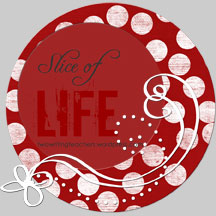 (This is part of the Slice of Life project)
(This is part of the Slice of Life project)
This week, we are fully immersed in paragraph writing in my writing classroom and yesterday, my students shared out their expository assignments on how to do something. They are the experts and their job was to explain to me — I called myself the Alien Mr. H. which you can imagine brought some funny guffaws from my students — the steps to a process.
It was a hoot. While some chose such things as shooting foul shots in basketball, others were really imaginative: how to trick your parents into allowing you to stay home from school, how to walk, how to be weird (quote from this student: “As my prop, I present … myself” and the class cheered playfully), how to pretend you are reading a book in class, etc. I was chuckling most of the day.
Here is one that I gave to them as an example — I wrote it:
Writing a song is not as difficult as it may seem at first. To begin, it helps if you play a musical instrument such as the piano or guitar, so that you can accompany yourself as you begin writing. If you don’t play a musical instrument, a good idea might be to find a partner for songwriting who can help you. Second, you should consider a theme or idea for your song. Some examples might be believing in yourself, the power of friendship or overcoming difficult times. Third, you should know that most songs have a verse and a chorus. The verse is often four lines long, held together with rhyming words. A rhyming dictionary can often help you find words that go together if you run into difficulty. The chorus is usually the catchy melody of a song and it is often repeated many times in the song. Next, in songwriting, it is important to practice the new song many times, revising your words and melody as often as needed. Finally, you may want to perform your song for friends or family to get a sense if they like it as much as you do. The sense of accomplishment you will feel in writing an original song is something that will stay with you for a long, long time.
I asked them if anybody wanted to record a podcast and there were a handful of volunteers from each room. Here, then, are a few of the How to Do Something paragraphs.
The first one is about playing Mario Kart (see my post from the other day, as I took some notes from this student), and others include how to blow bubbles with bubblegum (she was smart to ask me if she could chew gum and show how to do it. I said yes, and then others were regretting not thinking of that, too), the aforementioned How to trick your parents, and more.
Peace (and knowing how to achieve it),
Kevin


